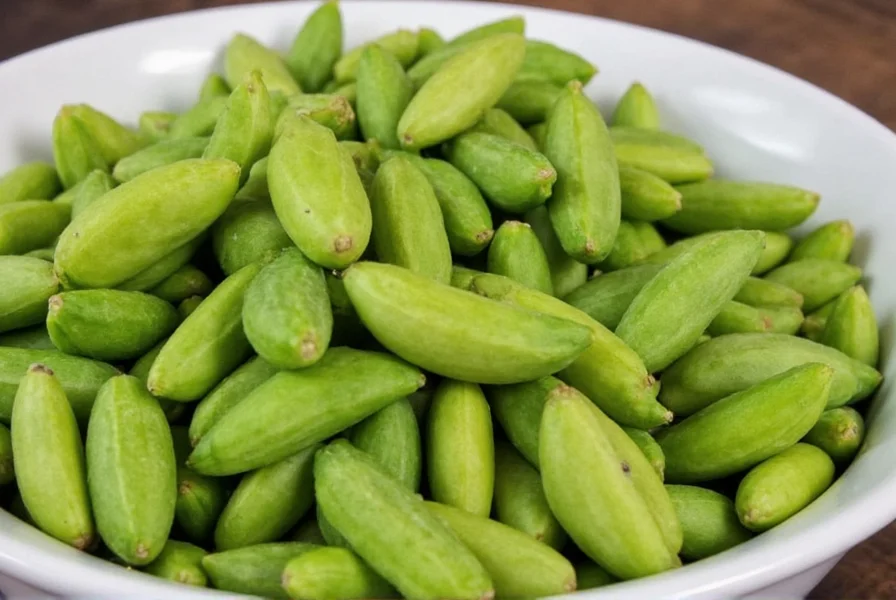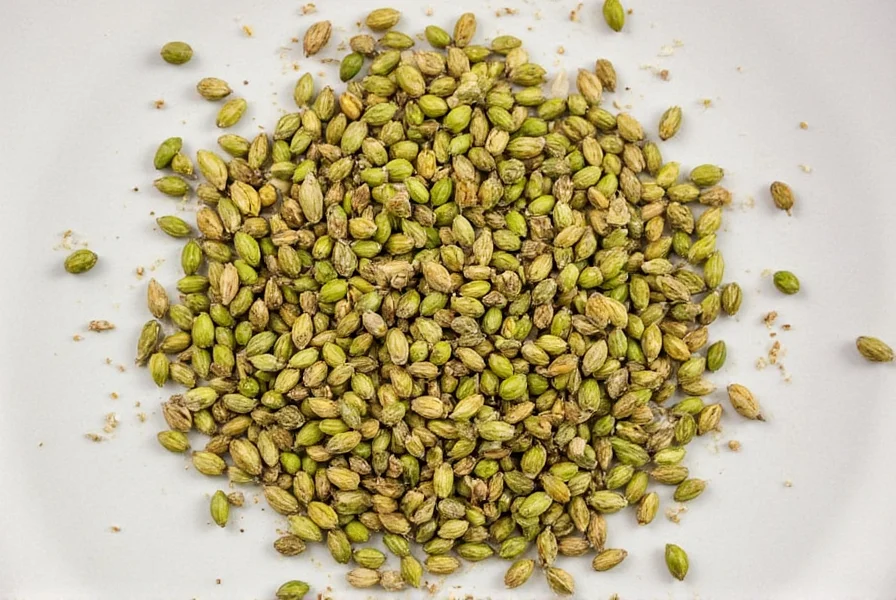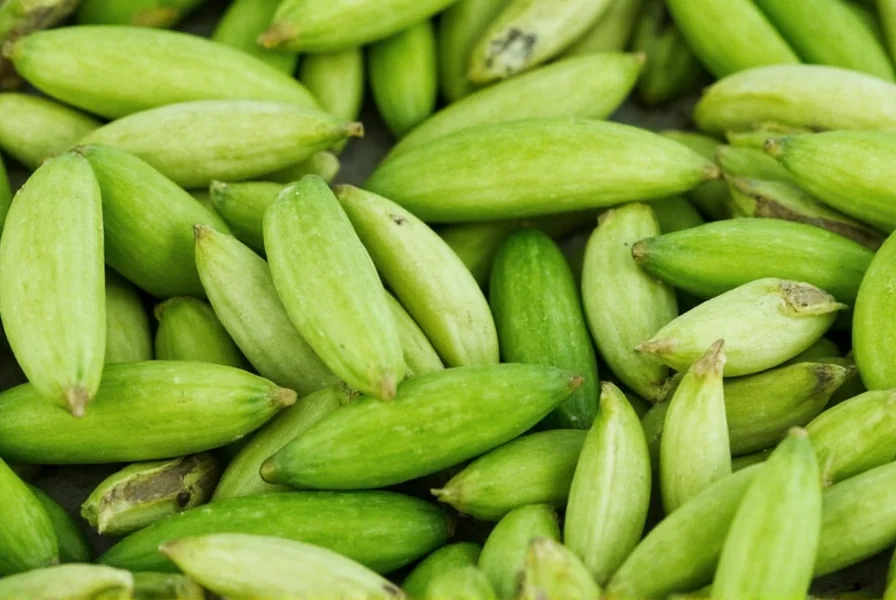Cardamom has been treasured for thousands of years across global cuisines and traditional medicine systems. This versatile spice comes from perennial herbaceous plants that grow to about 6-12 feet tall in tropical climates. The valuable part of the plant consists of the small black seeds contained within distinctive triangular pods.
Botanical Classification and Plant Characteristics
Scientifically classified as Elettaria cardamomum for green cardamom and Amomum subulatum for black cardamom, these plants belong to the same family as ginger and turmeric. Cardamom plants feature long, lance-shaped leaves and produce beautiful white or pale purple flowers with violet markings. The spice itself comes from the plant's seed pods, which develop after flowering.
Green cardamom pods are small (about 1 cm long), light green, and triangular in cross-section. Black cardamom pods are larger, darker, and have a rougher texture due to being dried over open flames, which gives them their characteristic smoky flavor.
Types of Cardamom: Understanding the Differences
When exploring what cardamom is, it's essential to distinguish between the main varieties:
| Characteristic | Green Cardamom | Black Cardamom |
|---|---|---|
| Botanical Name | Elettaria cardamomum | Amomum subulatum |
| Appearance | Small, light green pods | Larger, dark brown/black pods |
| Flavor Profile | Sweet, floral, citrusy, herbal | Smoky, camphorous, earthy |
| Primary Uses | Baking, desserts, beverages, light sauces | Meat dishes, stews, Indian curries, spice blends |
| Geographic Origin | South India (Kerala) | Himalayan region (Nepal, Bhutan, North India) |
Historical Origins and Global Spread
Cardamom's history traces back to ancient India, where it was mentioned in Sanskrit texts dating to 2800 BCE. Originally cultivated in the Western Ghats of Kerala, it became one of the world's most valuable spices, second only to saffron in price. Ancient Egyptians used cardamom for oral hygiene, while Vikings introduced it to Scandinavia during their travels.
Today, Guatemala is the largest producer of cardamom globally, followed by India and Sri Lanka. The spice remains integral to Middle Eastern, Indian, Scandinavian, and Southeast Asian culinary traditions. Understanding where cardamom comes from helps appreciate its cultural significance across different regions.

Flavor Profile and Culinary Applications
Cardamom's distinctive flavor makes it one of the most complex spices available. Green cardamom offers bright citrus notes with hints of lemon and orange peel, balanced by floral and herbal undertones and a subtle eucalyptus-like freshness. Black cardamom provides a more intense, smoky character that works well in savory applications.
Chefs and home cooks use cardamom in diverse ways:
- Baking: Essential in Scandinavian pastries like Finnish pulla and Swedish kardemummabullar
- Beverages: Key ingredient in Indian chai, Middle Eastern coffee, and Nordic mulled wine
- Rice dishes: Adds depth to biryanis and pilafs across South and Southeast Asia
- Meat preparations: Complements lamb and poultry in Middle Eastern and Indian cuisine
- Desserts: Enhances ice creams, custards, and fruit compotes with its floral notes
For maximum flavor, lightly crush the pods before use to release the aromatic oils. Whole seeds can be ground just before cooking for the freshest taste, as pre-ground cardamom loses potency quickly.
Nutritional Properties and Traditional Medicinal Uses
Beyond its culinary applications, cardamom has been used in Ayurvedic and Traditional Chinese Medicine for centuries. It contains compounds like cineole, limonene, and terpinolene that contribute to its therapeutic properties.
Nutritionally, cardamom provides:
- Antioxidants that combat oxidative stress
- Compounds with potential anti-inflammatory effects
- Essential minerals including potassium, calcium, and magnesium
- Dietary fiber when consumed with the whole seeds
Traditional medicinal applications include supporting digestion, freshening breath, and addressing respiratory issues. While modern research continues to explore these potential benefits, cardamom remains primarily valued as a culinary spice rather than a medicinal treatment.

Storage and Preparation Tips
To preserve cardamom's delicate flavor, proper storage is essential. Keep whole pods in an airtight container away from light and heat. Properly stored, they maintain quality for 6-12 months. Ground cardamom loses potency much faster, typically within 3-6 months.
When preparing cardamom for cooking:
- Lightly crush pods with the back of a knife to release seeds
- Extract seeds by gently prying open the pod
- Grind seeds just before use for maximum flavor impact
- Use sparingly—cardamom's strong flavor can dominate dishes
For beverages like chai or coffee, adding whole pods during brewing extracts flavor without making the drink gritty. In baking, finely ground cardamom distributes more evenly through doughs and batters.
Cultural Significance Across the Globe
Cardamom holds special cultural importance in many societies. In India, it's considered auspicious and often included in wedding ceremonies. Middle Eastern coffee traditions feature cardamom as a symbol of hospitality, with hosts carefully grinding fresh pods for guests. Scandinavian cultures incorporate it into holiday baking traditions, particularly during Christmas season.
The spice's value was so significant historically that it was sometimes used as currency. Ancient Greek and Roman physicians prescribed it for various ailments, while Egyptian mummies have been found with cardamom seeds placed in their tombs—evidence of its revered status across civilizations.
Frequently Asked Questions About Cardamom
What is the difference between green and black cardamom?
Green cardamom (Elettaria cardamomum) has a sweet, floral flavor ideal for desserts and light dishes, while black cardamom (Amomum subulatum) offers a smoky, robust taste better suited for savory applications. Green cardamom pods are small and light green, while black cardamom pods are larger, darker, and have a rougher texture from being dried over open flames.
How should I store cardamom to maintain freshness?
Store whole cardamom pods in an airtight container away from light, heat, and moisture. Properly stored, they maintain quality for 6-12 months. Ground cardamom loses potency much faster (3-6 months), so it's best to grind seeds just before use for maximum flavor. Avoid refrigeration, which can introduce moisture that degrades quality.
Can I substitute ground cardamom for whole pods in recipes?
Yes, but with caution. As a general rule, 10 cardamom pods equal approximately 1/2 teaspoon of ground cardamom. However, whole pods provide more complex flavor as they release oils gradually during cooking. Ground cardamom works well in baked goods but may become bitter in long-cooking dishes. For best results, lightly toast and freshly grind seeds from whole pods when possible.
What are common culinary uses for cardamom worldwide?
Cardamom features prominently in Indian chai and biryanis, Middle Eastern coffee and rice dishes, Scandinavian baked goods like cinnamon rolls, and Southeast Asian curries. It enhances both sweet and savory applications—from fruit compotes and ice cream to meat stews and vegetable dishes. In Arabic coffee, it's considered essential for proper hospitality.
Is cardamom safe for everyone to consume?
Cardamom is generally safe when consumed in culinary amounts. However, those with gallstone issues should consult a physician, as cardamom may increase bile production. In medicinal quantities, it might interact with blood thinners. Pregnant women should stick to food-use quantities rather than therapeutic doses. As with any spice, allergic reactions are possible but rare.











 浙公网安备
33010002000092号
浙公网安备
33010002000092号 浙B2-20120091-4
浙B2-20120091-4